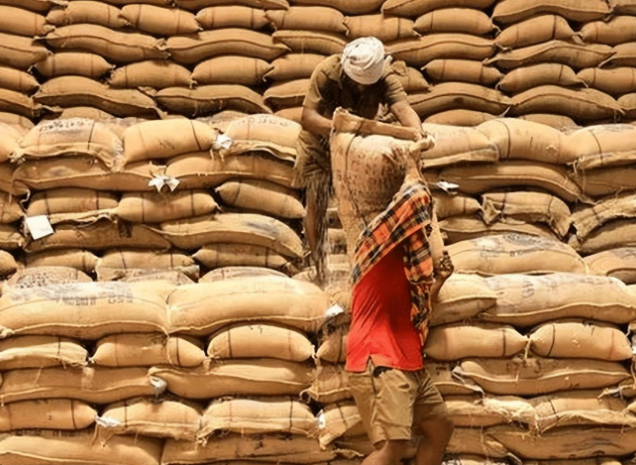With the Same Population of 1.4 Billion, Why Does India Export a Large Amount of Food While China Imports Worldwide?
Introduction: In the global population ranking, China and India stand far above other countries as the only two nations with populations exceeding 1 billion. With such vast populations, they have a unique advantage in labor force, but also face significant challenges in feeding their people. Although China has resolved its basic needs concerns, achieving Maslow’s first level of needs, it was not until the 1990s that China solved the problem of food and clothing for its people. In its development process, China has invested considerable time, funds, and effort in protecting arable land, improving soil quality, and advancing agricultural technology, achieving self-sufficiency in staples like rice. However, China still imports a significant amount of food, covering a wide range of agricultural products.
Surprisingly, India, with a similar population size and lower food production, exports a large quantity of food. India is the world’s largest rice exporter, exporting over a thousand tons annually. What drives this phenomenon? Is it because Indians consume less food?

China-India Food Production Gap: According to FAO data in 2022, China’s wheat production was 390.4 kg/acre, rice was 472 kg/acre, and corn was 429.1 kg/acre, nearly double that of India’s. China’s total food production last year was 1,373.06 billion jin (a unit of weight), with arable land constituting 13% of its total land area or 128 million hectares. China is the world’s largest producer of wheat and the second-largest producer of corn.
India’s arable land spans 160 million hectares, about 53% of its land area, yet its production is only half that of China’s. Despite both countries having a long history of cultivation and continuous improvement in agricultural technology, differences in climate conditions and economic development have led to varied outcomes.
Agricultural Exports as a Major Economic Pillar for India: Despite having a population nearly equal to China’s but with relatively lower food production, India has become the world’s largest food exporter, with agriculture as a mainstay of its economy. Seventy percent of India’s population resides in rural areas, generally with low education levels and a scarcity of industrial and technological talent. This is evident from India’s infrastructure, such as its railway system, and its reliance on imports for many industrial products. Hence, agriculture supports the economy, with the poorer segments depending on farming income for necessities and money.
India is the second-largest food producer and among the top producers of rice and wheat, with increasing export volumes. The government has implemented policies to boost agricultural exports, including export subsidies and streamlined export procedures.
Population Giants: In 2022, China’s population was 1.412 billion, while India’s reached 1.417 billion, leading to claims that India has surpassed China as the most populous country. India’s population density has reached 480.5 per square kilometer, over three times China’s density of 151.86.
Despite India’s global image as a major food exporter, it still faces hunger issues. In 2022, India scored only 29.1 points in nutrition, with 16.3% of its population malnourished, contrasting sharply with its status as a food exporter. China, on the other hand, is among the countries least worried about hunger, even importing nearly 100,000 tons of rice from India.
China’s Food Supply and Demand: Although China produces a high volume of food and has achieved self-sufficiency in staples like rice and wheat, there are shortages in some agricultural products. With a large population and diverse consumption needs, some crops face supply-demand mismatches. As living standards rise, demand for high-protein and nutritious foods increases, leading China to import significant quantities of soybeans, corn, and even wheat to meet diverse needs.
The Importance of Food Security: Food security remains a fundamental guarantee for national development and a global concern. Food not only sustains human development but also supports the agricultural economy. The development of agriculture is crucial for rural income and national stability. Despite achieving food self-sufficiency, China imports food to meet consumption demands and prevent crises, influenced by climate, geographical conditions, and development status.
India’s Unique Conditions: India’s agricultural land area surpasses China’s, benefiting from favorable geographic conditions and a mostly plain terrain, ideal for farming. However, India’s agricultural technology lags behind, relying on traditional methods that increase costs. In contrast, China employs strict farming practices and water conservation measures. Despite India’s larger agricultural area, its forest coverage is low, posing challenges to maintaining soil moisture and fertility.
Economic Needs Driving India’s Exports: India’s climate is conducive to agriculture, especially for crops like rice, which can be harvested three times a year. Agriculture is vital for India’s economic development, addressing foreign exchange shortages exacerbated by currency depreciation. Exporting food has become a familiar strategy for India, ensuring foreign exchange earnings.
Conclusion: Different countries face unique situations, making it impossible to apply the same solutions everywhere. China’s food imports aim not only to ensure enough food but also to improve dietary quality. Food security is a fundamental basis for development, and addressing hunger is a priority. Both India and China have their reasons for their respective food export and import policies, influenced by their geographic, economic, and development conditions.